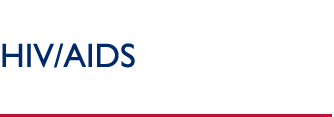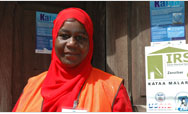World AIDS Day: One Year Later
 |
| Photograph of an HIV-positive woman in Delhi, India. Source: UNAIDS/W.Phillips |
USAID's Telling Our Story Project Documents the Global HIV/AIDS Pandemic
On December 1, World AIDS Day, President George W. Bush announced that 400,000 men, women, and children are now receiving antiretroviral treatment under the President’s Emergency Plan for AIDS Relief.
The Emergency Plan is a five-year, $15 billion, multifaceted approach to combating HIV/AIDS that includes bilateral programs in 123 countries around the world, with a focus on 15 countries in Africa, Latin America and the Caribbean, and Asia.
Worldwide, the number of people infected with HIV rose to 40 million in 2005, according to a November 21 report by the Joint United Nations Program on HIV/AIDS (UNAIDS) and the World Health Organization (WHO). UNAIDS also reported that 3.1 million people died from the disease in 2005 and that 4.9 million new infections occurred.
USAID’s budget to battle the widening pandemic in 2005 rose from $1.3 billion to $1.5 billion.
The President's Emergency Plan for AIDS Relief
In September, USAID awarded a major contract to provide a lifeline of essential drugs and supplies to fight HIV/AIDS in the Emergency Plan’s 15 focus countries. The Supply Chain Management System project will provide up to $500 million for medicine and supplies over three years so that millions of people infected with HIV/AIDS can receive life-prolonging drug treatment.
People Estimated to be Living with HIV in 2005 |
| North America |
1.2 million |
| Caribbean |
300,000 |
| Latin America |
1.8 million |
| Western and Central Europe |
720,000 |
| North Africa and Middle East |
510,000 |
| Sub-Saharan Africa |
25.8 million |
| Eastern Europe and Central Asia |
1.6 million |
| East Asia |
870,000 |
| South and South East Asia |
7.4 million |
| Oceania |
74,000 |
| TOTAL |
40.3 Million* |
|
| * Of the 40.3 million total, 20.5 million are men, 17.5 million are women, and 2.3 million are children under 15. |
|
“The system is designed to help HIV/AIDS programs meet the President’s goals of ‘two-seven-ten’ by 2008,” said Carl Hawkins of USAID’s Office of HIV/AIDS.
“Two-seven-ten” refers to the Emergency Plan goal of treating 2 million people, preventing 7 million new infections, and providing care for 10 million people, including orphans affected by HIV/AIDS.
 |
| |
A man spreads HIV/AIDS awareness among Senegalese fishing communities. USAID was Senegal’s first
donor for HIV/AIDS activities, and has spent more than $25 million to help Senegal keep HIV prevalence low. Read more Source: Richard Nyberg, USAID/Senegal |
In addition, the Agency continues to support the Emergency Plan’s ABC (Abstinence, Be faithful, and correct and consistent use of Condoms) approach to preventing new HIV infections.
Of growing interest to USAID is the importance of being faithful. Reducing the number of sexual partners is critical to stopping the spread of HIV/AIDS, especially among the many girls and young women who become infected every year.
The recently released UNAIDS/WHO report indicated that young women are infected at far greater rates than young men, particularly in Africa. Changing this requires addressing the behavior of adult men while young people receive education.
HIV infections can be reduced by changing behaviors such as promiscuity, older men having sex with younger women, sexual abuse, and even alcohol abuse.
Just before World AIDS Day, USAID Assistant Administrator for Global Health Kent Hill summed up the international struggle against HIV/AIDS. “The fight against HIV/AIDS is literally a matter of life and death,” he said. “USAID is committed to doing all we can to defeat this scourge.”
Related Links
|


